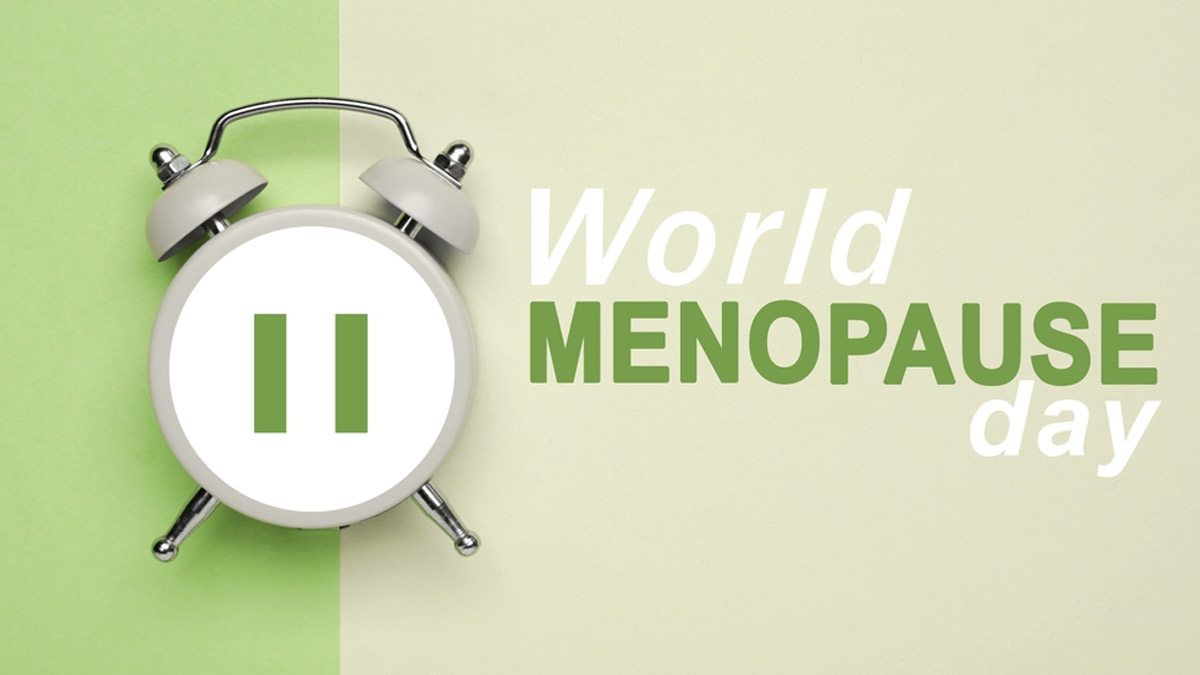
Menopause marks the end of a woman’s reproductive years, particularly the menstrual cycle. It occurs when the ovaries stop producing eggs and menstruation, or monthly menstrual bleeding, permanently stops. As a result, a woman can no longer conceive or become pregnant.
Table of Content:-
However, menopause is not a sudden event but a gradual transition that happens over stages. This journey can vary from person to person in terms of timing and symptoms. Throughout the transition, the body undergoes various changes, primarily due to fluctuating hormone levels, particularly oestrogen and progesterone, and these hormonal shifts can lead to both physical and emotional symptoms, making the menopausal transition a unique experience for each woman.
On this World Menopause Day, celebrated on October 18 every year, let us understand menopause more closely.
Also Read: Premature Menopause: Understanding Health Risks And Symptoms To Watch Out For
What Is The Average Age Of Menopause?![]()
According to the National Institute on Aging, menopause usually begins between ages 45 and 55. It usually lasts about seven years but can be as long as 14 years.
It is important to note that the duration of menopause can depend on lifestyle factors, such as smoking, age it begins, and race and ethnicity.
Stages Of Menopause
There are three stages of menopause:
Perimenopause
This is the first stage of menopause, which occurs when the ovaries start to produce less oestrogen. It can begin years before menopause and usually starts in a woman's 40s.
Menopause
According to the World Health Organization (WHO), menopause is said to have occurred after 12 consecutive months without menstruation. Some women may experience menopause earlier (before 40 years of age), which is also called premature menopause.
Postmenopause
This is the time after menopause, when a woman's ovaries have stopped producing oestrogen and progesterone. It is when most symptoms of menopause ease up, but some may continue for several years.
Signs And Symptoms Of Menopause![]()
Menopause symptoms occur due to hormonal changes in the body. These symptoms can vary from person to person and happen over time. Some of the common menopause symptoms include:
- Irregular periods
- Vaginal dryness
- Hot flashes
- Night sweats
- Sleep problems
- Mood changes
- Brain fog
Also Read: Cervical Health In Your 20s, 30s, 40s, And Post-Menopause: Explained
Side Effects Of Menopause![]()
Menopause can also lead to certain side effects. To put it in other words, it can make a person more vulnerable and prone to certain conditions. Some of these effects include:
- Urinary incontinence or Urinary Tract Infections (UTIs)
- Skin changes, such as dryness and adult acne
- Hair loss or thinning
- Headaches or migraines
- Joint stiffness, aches, and pains
- Memory problems
- Tinnitus
- Reduced sex drive (libido)
Research also suggests that osteoporosis is most common in postmenopausal women, affecting one in three women and one in five men over the age of 50 years.
Moreover, menopausal women can also be more prone to heart disease, especially those who experience early natural menopause. A study published in the JAMA Internal Medicine followed postmenopausal women who never used hormone therapy and found that those who had natural menopause before age 40 had a higher risk of Coronary Heart Disease (CHD) compared to those who had natural menopause after age 50. However, this increased risk was only observed among current smokers, suggesting that smoking may play a significant role in the association between early menopause and CHD.
Conclusion
It is important to note that menopause is a natural and inevitable phase in a woman's life. While the experience of menopause can vary from person to person, understanding its stages, signs, and potential side effects can help women better navigate this transition.
Therefore, by being aware of the physical and emotional changes associated with menopause and the potential risks such as osteoporosis and heart disease, women can make informed choices to maintain their health and well-being during and after menopause.
Also watch this video
How we keep this article up to date:
We work with experts and keep a close eye on the latest in health and wellness. Whenever there is a new research or helpful information, we update our articles with accurate and useful advice.
Current Version


